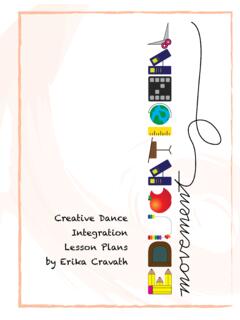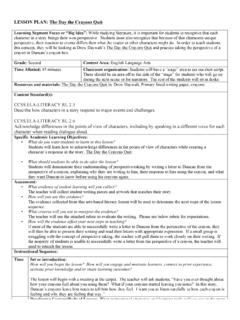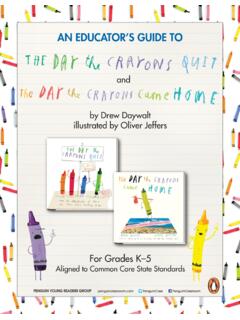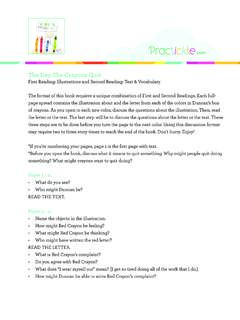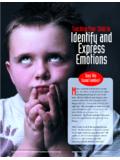Transcription of SOCIAL EMOTIONAL LEARNING
1 SOCIAL EMOTIONAL LEARNING SOCIAL SKILLS LESSON PLAN Created by: Sara Smoot S O C I A L S K I L L : W O RK I NG T O GE T H E R C A S E L C O M PE T E N C Y : REL A T I O N S H I P S K I L L S B O O K I N F O RM A T I O N Book Title: The Day the crayons quit Author: Drew Daywalt Publisher: Philomel Books Year: 2013 ISBN Number: 978-0399255373 Number of Pages: 40 pages Reading Level: Pre-K - 6th grade B O O K S Y N O PS I S Duncan receives a letter of complaint from each crayon.
2 Each crayon is complaining about how they are used and each recommends their own idea about what they would like to do. In the end, Duncan draws a beautiful picture using all of the crayons . L E S S O N O B JE C T I V E By working together, we can create amazing things. When we cooperate, our work can be a rewarding experience. L E S S O N M A T E RI A L S A N D A D V A N C E D P RE PA RA T I O N Materials: blank white paper (8 1/2 by 11 ) for each student and one crayon for each student, making sure that each student in a group has a unique color (recommend five to six students per group) Preparation: Assign students to work together at their desks in small groups of five or six.
3 Collect and organize the activity s materials, one crayon and one paper for each student. K E Y V O C A B U L A RY A N D CO N C E PT S Working together - cooperatively work with other students to finish a task or create something; to listen and appreciate other students thoughts and suggestions Creativity - coming up with a new idea or finding a different way of doing something PRE-RE A D I N G D I S C U S S I O N Show the front book cover and ask the students what they think the book is about. RE A D T H E B O O K PO S T RE A D I N G D I S C U S SI O N Ask the following questions to the class: Why were the crayons complaining?
4 Do you think the crayons had a right to complain? How do you think Duncan felt when he read the letters? What did Duncan do after he read the letters? What would you have done if you received those letters? How we can better work with our classmates and our family members? PO S T RE A D I N G A C T I V I TY Group Drawings Organize the students into small groups with 5 or 6 students in each group. Pass out a piece of paper to each student. Also, give one crayon to each student in the group, making sure that each group member has a different colored crayon. Explain that the students are going to work within their group to create drawings.
5 Ask each student to draw on the paper in front of them (with their one crayon) for about 60 seconds. After 60 seconds, ask the student to pass the paper to the person next to them (on their right), then ask that student to draw something on the paper in front of them (60 seconds). After each picture has been rotated all the way around the group and each student has had a chance to color on each picture in their group, present the pictures to the class. Ask students to explain how they worked together to create their pictures. C L O S U RE As a class, discuss how and when students might work together with their classmates. How does this type of cooperation help everyone do better?
6 Talk about how some things are hard to do all by yourself. Sometimes we really need others help. Explain that when the students worked together on their drawing new ideas were presented that one person might not have thought about on their own. Explain how this might be beneficial. Explain that almost all projects in science, business, etc. are done in teams. Discuss certain activities, such as making a car, a complex heart surgery, getting ready to send a man to the moon, preparing a cafeteria lunch, building a home, etc. takes more than one person. Explain how each of us has different abilities and talents and that we benefit because when we each contribute our best effort, the end product is something much better than we could make on our own.
7 Place the poster where students can frequently be reminded of the statement and review the SOCIAL skill steps with you class. Steps for Working Together 1. Look and listen. 2. Show your interest. 3. Use kind words. 4. No arguing, whining, or pouting. 5. Do your part. "Alone we can do so little, together we can do so much." Helen Keller microsoft office clipart non-commercial use
